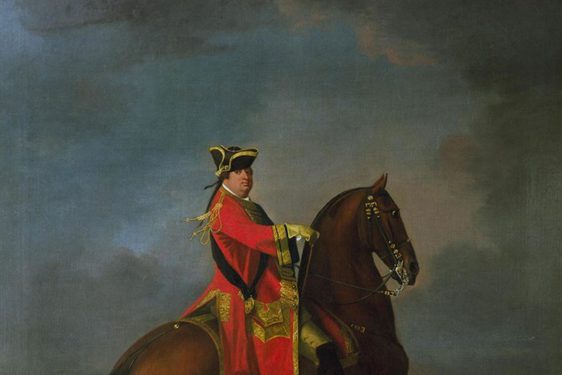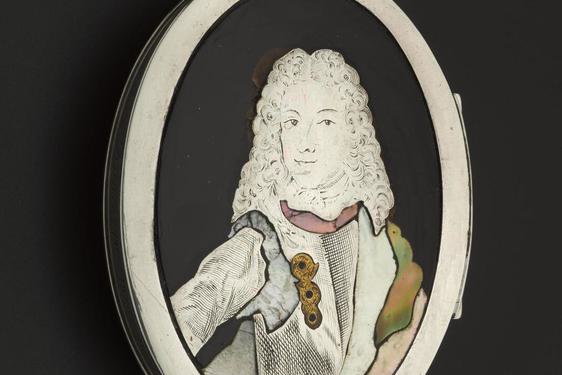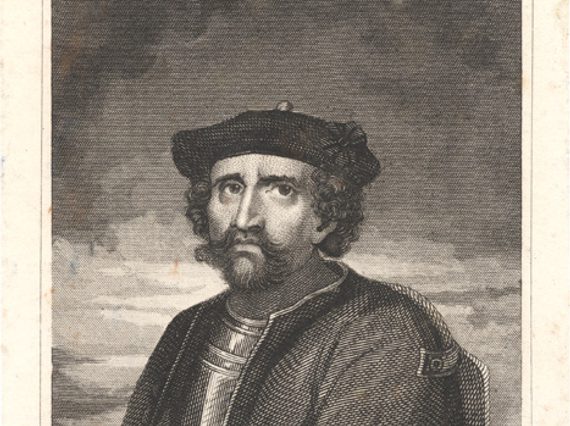
Who was Rob Roy MacGregor?
News Story
Born in Glengyle in 1671, Robert McGregor would became famous as an outlaw, known as the 'Scottish Robin Hood'. McGregor's nickname ‘Rob Roy’ comes from Ruadh, which means red in Gaelic – a reference to his fiery red hair.
Rob Roy the cattleman
In Sir Walter Scott’s novel ‘Rob Roy’, McGregor was portrayed as a principled thief forced into cattle stealing. The real Rob Roy McGregor was a notorious cattle thief and extortionist who ran a lucrative protection racket. In 1712 a deal with the Duke of Montrose went badly wrong and MacGregor was outlawed.

Obligation by Rob Roy to deliver to James, Duke of Montrose, 60 Highland cows and a bull at ‘fourteen pounds Scotts per piece with ane bull to the bargane.’ Museum reference H.OA 40.
Supporter of the Jacobite cause
Rob Roy also developed an association with the Jacobite cause . In 1689, at the age of just 18, Rob Roy, together with his father, joined the Jacobite forces led by John Graham, 7th Laird of Claverhouse and 1st Viscount Dundee.
On 27 July 1689 the Battle of Killiecrankie was fought between Jacobites loyal to the deposed King James and troops supporting the Protestant King William.
The Jacobites won the battle, but at a terrible cost – a third of their number were killed, including Dundee, who was fatally wounded during the Jacobite charge. Less than a month later, on 21 August, the Battle of Dunkeld raged for over 16 hours and resulted in the tired Jacobites admitting defeat.
Rob Roy and the 1715 challenge
During the 1715 rising, the Duke of Argyll commanded the government troops in Scotland. Rob Roy had been in league with Argyll, an enemy of Montrose. With his loyalties divided, Rob Roy is said to have been an onlooker at the Battle of Sheriffmuir rather than a participant.
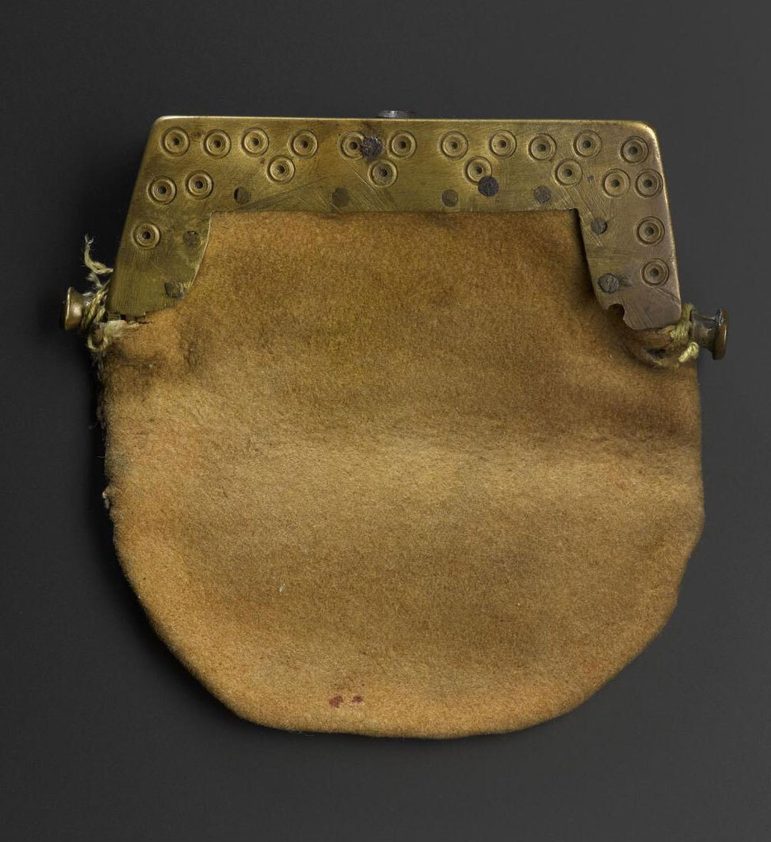
Small purse of deerskin with a rectangular brass clasp incised with dot-and-circle ornament, said to have been owned by Rob Roy MacGregor. Perthshire, 18th century. Museum reference H.NE 37.
Rob Roy and the 1719 challenge
In 1719, James VII's son James VIII attempted another challenge to gain the throne, this time supported by Spain. The Jacobite army clashed with Government forces at Glen Shiel, where they were defeated. Rob Roy took part in the battle, and was badly wounded.
Rob Roy the outlaw
Rob Roy was eventually arrested in 1722, but was pardoned five years later by George I, saved in the nick of time from being transported as a prisoner to Barbados.
He died at his home in Balquidder at the age of 63.
Rob Roy the legend
Rob Roy became a legend in his own life time when author Daniel Defoe published a fictionalised account of his life, The Highland Rogue, in 1723. His resulting popularity may have influenced the decision to pardon him.
His fame increased when Sir Walter Scott published his novel Rob Roy in 1817. In that novel, Rob Roy has a security feature on his sporran – a clasp which will fire pistols if not opened correctly! The clasp (museum reference H.NE 12) in the museum’s collection was likely the model for Scott.
Image gallery
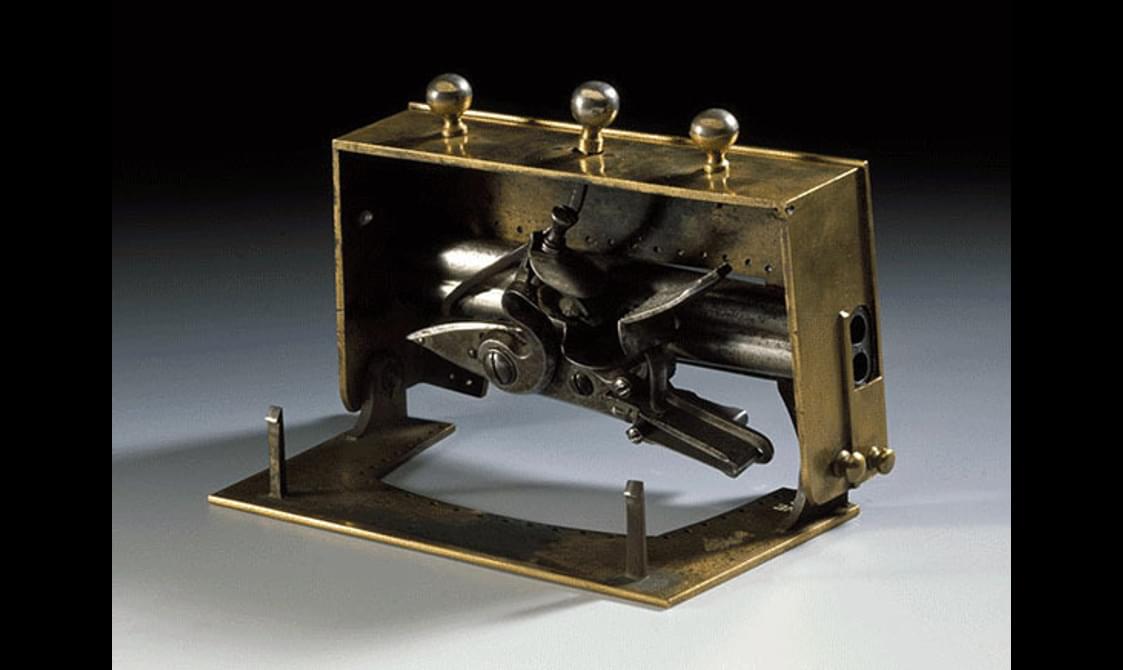
Sporran clasp of brass and steel with four concealed pistols which would fire if the sporran was not opened correctly. Museum reference H.NE 12.
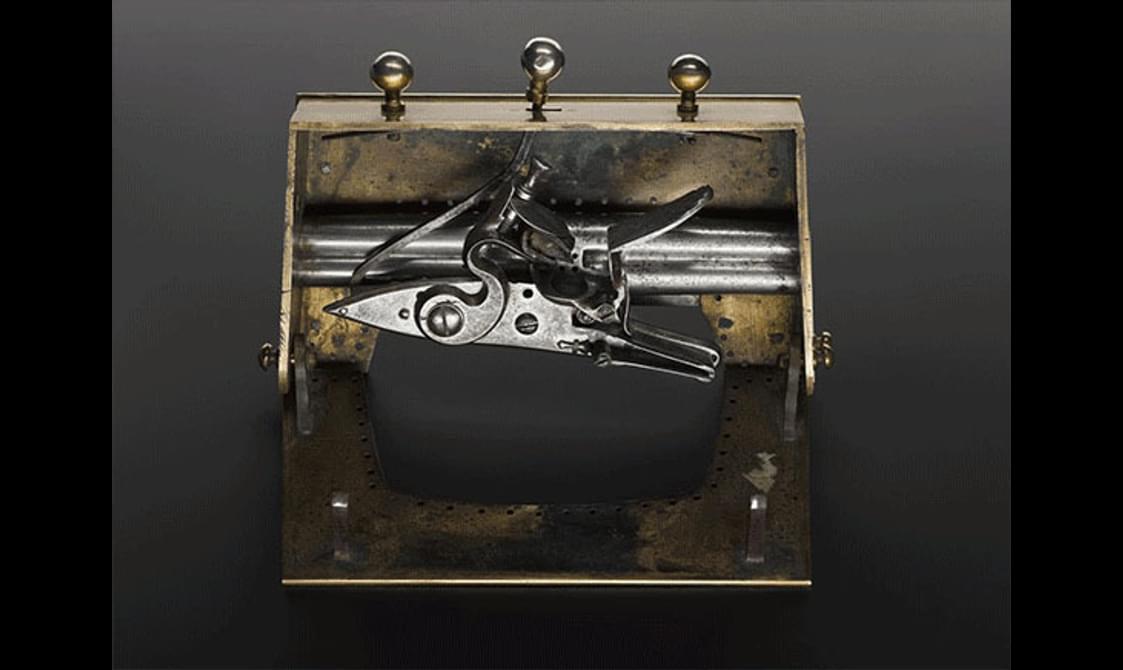
Sporran clasp of brass and steel with four concealed pistols which would fire if the sporran was not opened correctly. Museum reference H.NE 12.
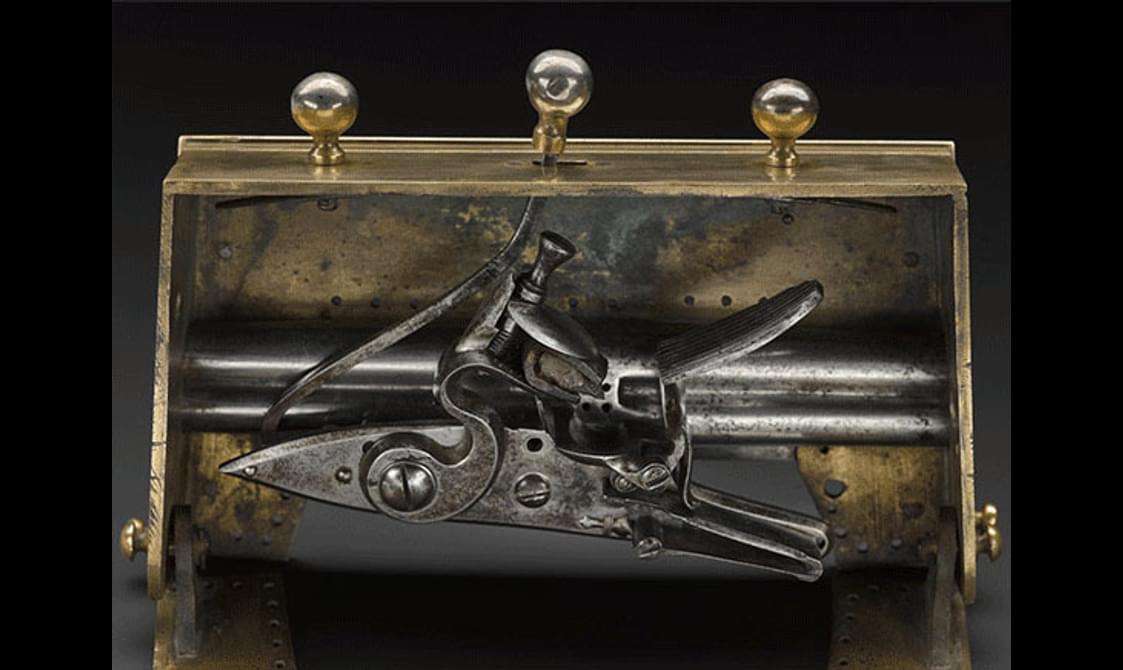
Sporran clasp of brass and steel with four concealed pistols which would fire if the sporran was not opened correctly. Museum reference H.NE 12.
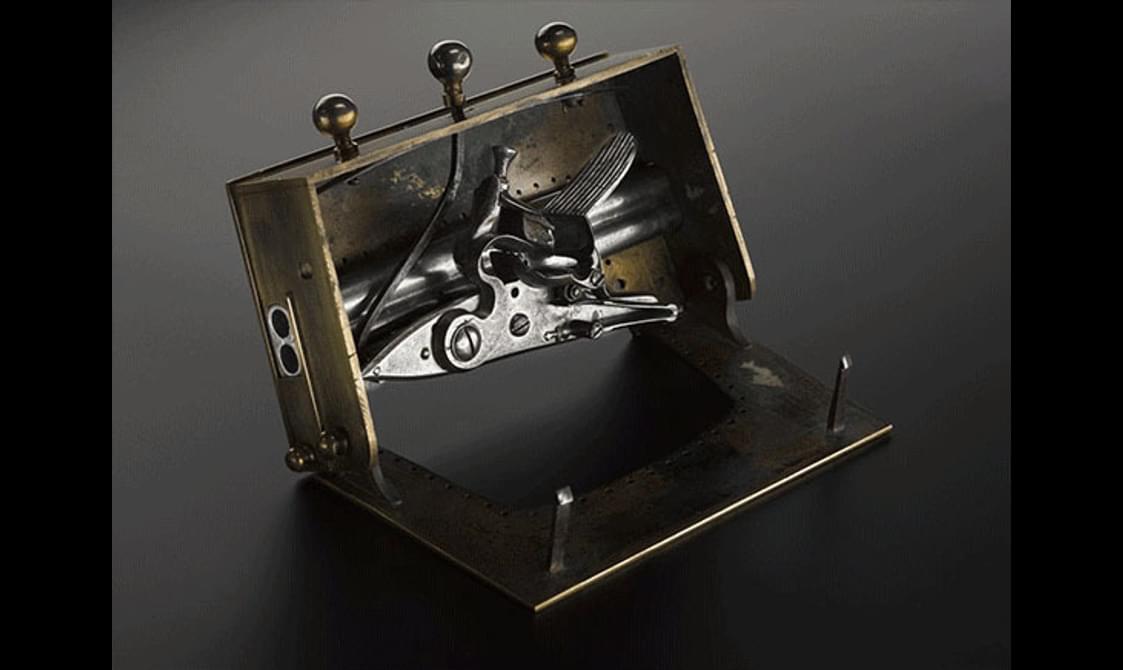
Sporran clasp of brass and steel with four concealed pistols which would fire if the sporran was not opened correctly. Museum reference H.NE 12.
